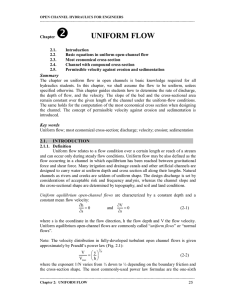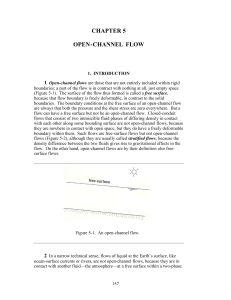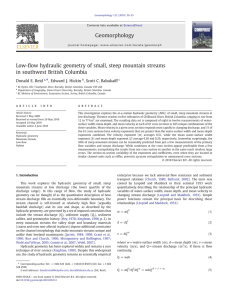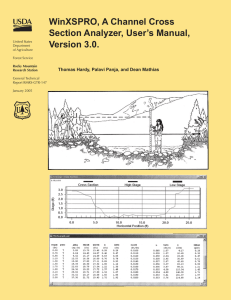CE 372 Engineering Hydrology and Hydraulics Fall 2006 Homework 7
advertisement
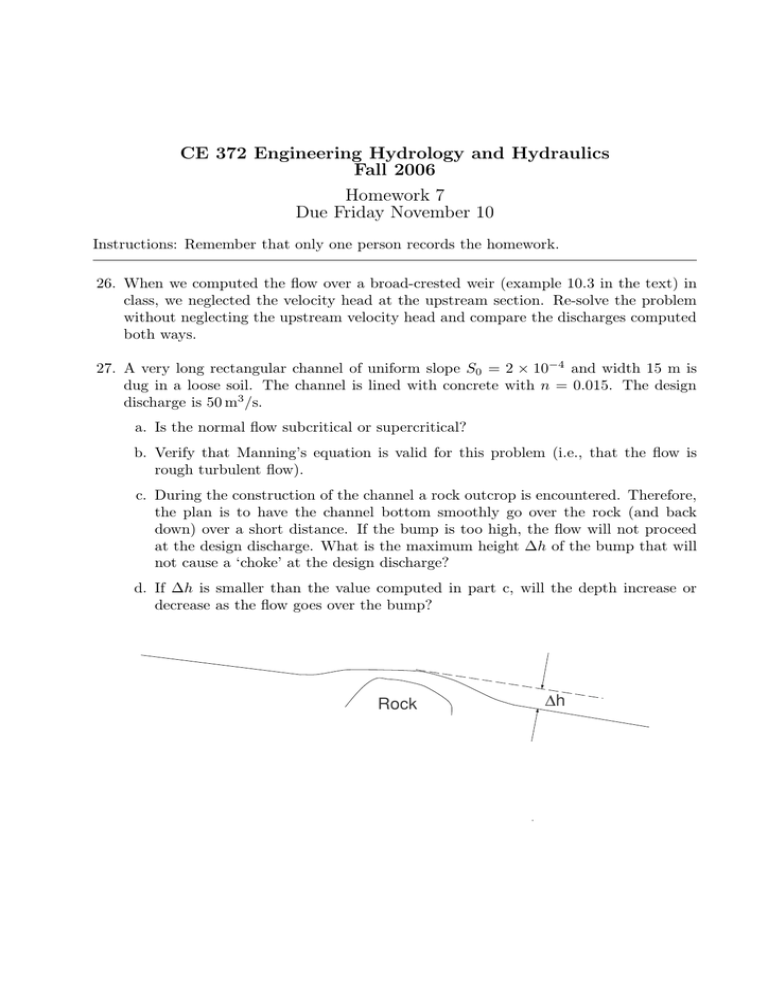
CE 372 Engineering Hydrology and Hydraulics Fall 2006 Homework 7 Due Friday November 10 Instructions: Remember that only one person records the homework. 26. When we computed the flow over a broad-crested weir (example 10.3 in the text) in class, we neglected the velocity head at the upstream section. Re-solve the problem without neglecting the upstream velocity head and compare the discharges computed both ways. 27. A very long rectangular channel of uniform slope S0 = 2 × 10−4 and width 15 m is dug in a loose soil. The channel is lined with concrete with n = 0.015. The design discharge is 50 m3 /s. a. Is the normal flow subcritical or supercritical? b. Verify that Manning’s equation is valid for this problem (i.e., that the flow is rough turbulent flow). c. During the construction of the channel a rock outcrop is encountered. Therefore, the plan is to have the channel bottom smoothly go over the rock (and back down) over a short distance. If the bump is too high, the flow will not proceed at the design discharge. What is the maximum height ∆h of the bump that will not cause a ‘choke’ at the design discharge? d. If ∆h is smaller than the value computed in part c, will the depth increase or decrease as the flow goes over the bump? Rock ∆h 28. A channel is to be excavated in clay. It will have a triangular cross section, a slope of 2 × 10−4 , and an asphalt lining. The channel must carry a discharge of 2 m3 /s. a. (Optional extra credit) Show that the best hydraulic section corresponds to α = 45◦ . b. Design the channel using the section characteristics computed in part a. Determine the normal depth and the necessary freeboard, check the minimum permissible velocity, and comment on the side slope of the channel. c. An additional design requirement is that the flow should be subcritical. Is it? (Hint: Remember to use hydraulic depth.) α h 29. A long rectangular channel is 6 m wide, and it has a slope of 5 × 10−4 and n = 0.014. Water enters the channel under a sluice gate at which the upstream water level is 8 m above the bottom. a. If the gate opening is 0.9 m (and the contraction coefficient is 0.61), estimate the discharge. b. Quantitatively plot the water surface profile y vs. x from the vena contracta (the position of maximum contraction of the flow) to either the point of normal flow or a hydraulic jump. c. Suppose the slope is 5 × 10−3 . Sketch (do not compute) the water surface profile.








